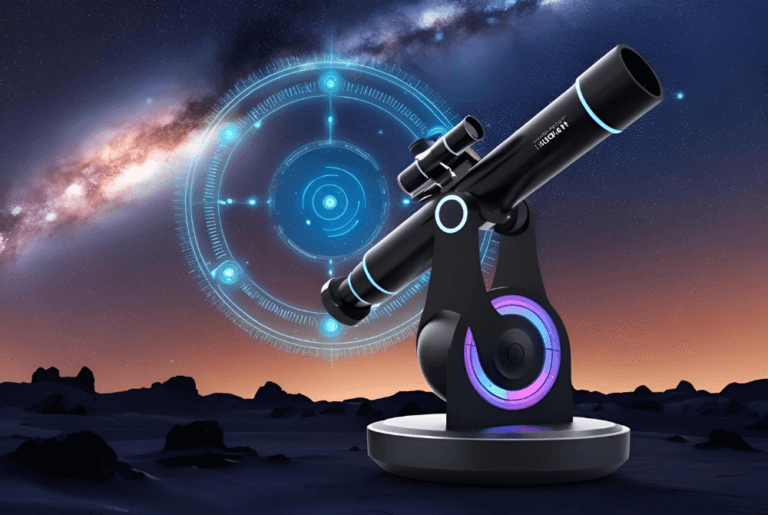Introduction- History of Compass
How does a humble needle, magnetized by the Earth’s heartbeat, become a catalyst for global transformation? The answer lies in the history of the compass, a story that transcends continents and centuries. From the silk roads of ancient China to the vast oceans braved by European explorers, the compass has served as a silent navigator, shaping trade, warfare, and our very understanding of the world. Join us on this journey as we uncover the secrets of this ingenious invention, its enduring impact on diverse cultures, and the reasons why, even in the digital age, the compass remains a timeless symbol of human curiosity and the boundless urge to explore.
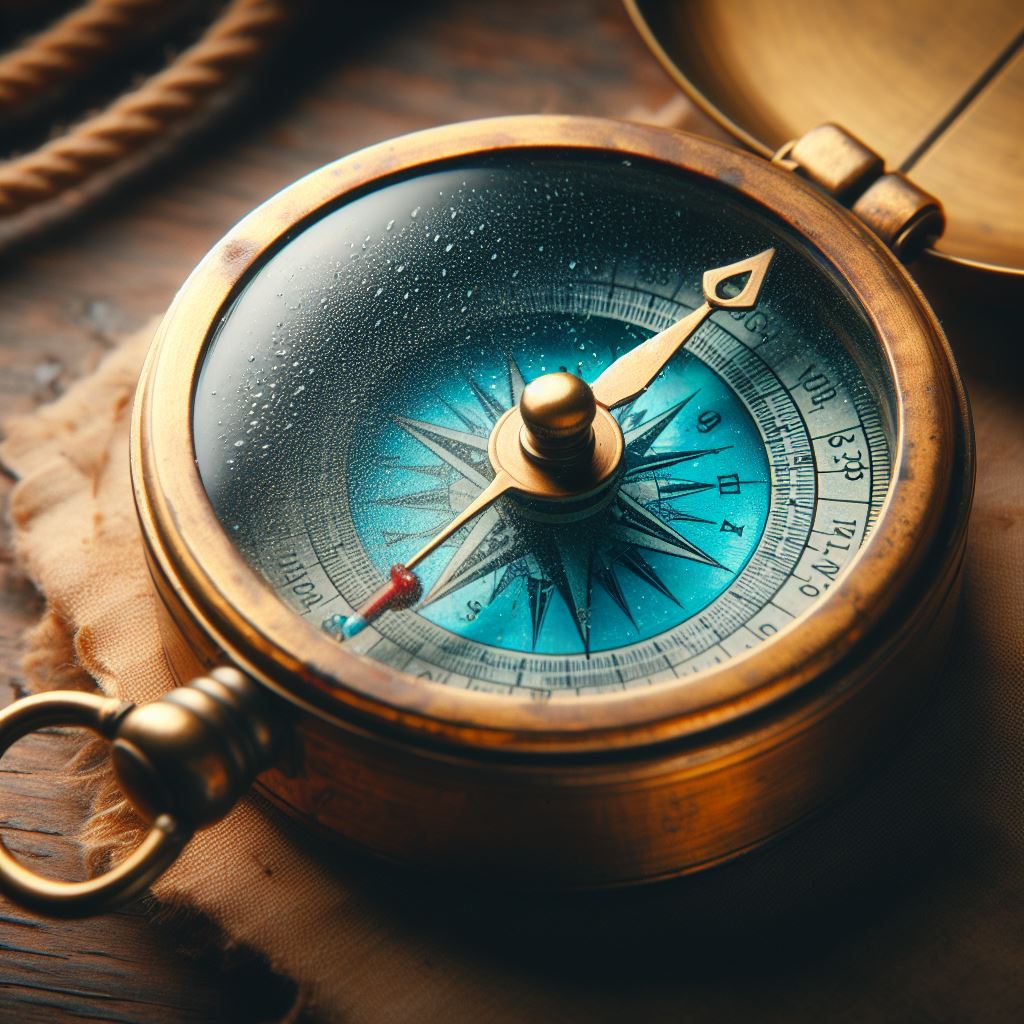
Navigation Before Compass
Imagine embarking on a voyage before the trusty compass. No needle faithfully pointing north, no constellations whispering secrets of direction. Instead, a world cloaked in uncertainty, where every journey was a gamble with the unknown. But fear not, intrepid explorer, for humans are nothing if not resourceful!
Landmarks: Mountains etched against the dawn, rivers glinting like silver snakes, towering rock formations – these silent sentinels served as our ancient GPS. Travelers memorized their shapes, and their positions relative to the sun and moon, weaving intricate mental maps that guided them through familiar lands. But what of uncharted territories?
Celestial Navigation: When land faded into the horizon, our eyes turned skyward. The constellations, celestial clockwork ever-turning, became our compass. Skilled navigators could plot their course with surprising accuracy by reading the dance of stars and the arc of the sun and moon. Yet, cloudy nights and shifting seasons could shroud the heavens, leaving even the wisest navigator adrift.

Dead Reckoning: Armed with grit and guesswork, our ancestors practiced the art of dead reckoning. Each day’s journey, measured by the creak of oars or the beat of hooves, etched itself onto mental maps. But alas, wind and currents whispered their own tales, subtly tugging courses astray. Dead reckoning, a valiant effort, was prone to the whispers of error.
Then, like a beacon piercing the fog, came the compass. This seemingly simple device, harnessing the Earth’s own magnetic pull, revolutionized navigation. No longer chained to landmarks, celestial whims, or guesswork, explorers could chart their course with newfound confidence. Oceans became highways, uncharted lands beckoned, and the world shrunk before the insatiable human spirit.
The invention of the compass revolutionized navigation and exploration by providing a reliable and consistent means of determining direction. With the compass, navigators no longer had to rely solely on landmarks, celestial navigation, or dead reckoning. Instead, They could use the Earth’s magnetic field to accurately identify their direction. This breakthrough allowed sailors and explorers to travel further and with greater confidence, opening up new trade routes and enabling the exploration and colonization of distant lands. The compass also had tremendous importance for combat, since it allowed armies to navigate and coordinate their moves on the battlefield more successfully.
The Origins of the Compass
Early Whispers of Magnetism (4th Century BCE):
The earliest whispers of a compass-like device emerge from the 4th century BCE, nestled within the pages of the “Book of the Devil Valley Master” from ancient China. This text describes a curious tool crafted from lodestone, a naturally magnetized mineral, placed on a wooden board marked with directional lines. When set in motion, the lodestone would align with the Earth’s magnetic field, hinting at the nascent understanding of this mysterious force.
Han Dynasty (206 BCE – 220 CE):
The Han Dynasty era in China is often credited with the birth of the compass, although its exact use remains shrouded in some ambiguity. Archaeological evidence suggests its initial purpose might have been linked to divination and geomancy, practices that sought to understand the relationship between the Earth’s magnetic field and earthly phenomena.
Unearthing Evidence:
Excavations in China have unearthed artifacts like the “South Pointing Chariot” from the 3rd century BCE, believed to be an early form of compass used for divination rituals. Additionally, the “Book of Burial of the Lady of Dai” from the Western Han Dynasty depicts a spoon-shaped object with a handle pointing south, further strengthening the connection between this era and the compass’s early development.
11th century:
The 11th century witnessed a pivotal leap in the compass’s journey, marking the dawn of the “dry compass.” This ingenious innovation, attributed to Chinese scholar and official Shen Kuo (1031-1095), replaced the cumbersome lodestone on a board with a magnetized needle delicately floating in a bowl of water.
Shen Kuo’s “Dream Pool Essays” (1088 CE) serve as a primary historical reference, vividly describing the dry compass and its advantages. He mentions its portability, making it ideal for travelers and sailors, and its improved accuracy compared to earlier versions. Archaeological evidence further supports this development. Excavations in China have unearthed fragments of ceramic bowls believed to have housed dry compass needles, dating back to the Song Dynasty (960-1279 CE).
The “dry compass” moniker itself wasn’t universally adopted until the 12th century, appearing in texts like Zhu Yu’s “Pingzhou Kettle Inscription” (1119 CE). This name emphasizes the crucial distinction from its water-based predecessor, highlighting its increased practicality and ease of use.
The impact of this refinement was profound. The dry compass’s portability made it readily accessible to explorers, merchants, and military personnel. Its improved accuracy allowed for more precise navigation, particularly on the open seas. This, in turn, fueled a surge in maritime exploration, trade, and cultural exchange.
Examples of historical records showcasing the dry compass’s impact:
- Zhu Yu’s “Pingzhou Kettle Inscription” (1119 CE): Mentions the compass’s use in maritime navigation.
- “Mencius’ Outer Works” commentary (12th century): Describes the compass guiding travelers through deserts.
- Marco Polo’s “Travels” (13th century): Mentions the compass being used by Chinese sailors.
12th century:
By the 12th century, whispers of the compass’s magic had drifted across the Silk Road, reaching the eager ears of European scholars and explorers. Arab translations of Chinese texts like Shen Kuo’s “Dream Pool Essays” introduced them to the wonders of the dry compass. Early evidence of its adoption can be found in the writings of Alexander Neckam (1157-1217), an English scholar, who mentions a “marine needle” used for navigation.
Pioneering Voyages and Charting New Courses:
European sailors were quick to grasp the compass’s potential. Italian navigators like Flavio Gioia (c. 1290-1340) are often credited with refining the compass for maritime use, although the exact timeline and contributions remain debated. Regardless of its origin story, the compass soon became an indispensable tool on European ships. Viking sagas and early nautical charts hint at its increasing adoption, guiding voyages across the North Atlantic and Mediterranean.
Historical References and Evidence:
- Pietro Lombardo’s “Liber Maiolichinus” (1295): Describes a magnetic needle used for navigation.
- Guiot de Provins’ “Bible Guiot” (13th century): Mentions the compass as a tool for mariners.
- Archaeological finds: Compass fragments discovered in shipwrecks like the Mary Rose (1511) showcase the technology’s increasing prevalence.
13th century:
The 13th century witnessed the birth of the iconic “mariner’s compass,” a more stable and accurate version of its predecessors. This design featured a magnetized needle pivoted on a central pin within a sealed box, often marked with cardinal directions and wind roses. This innovation further enhanced navigational precision and solidified the compass’s role as a crucial maritime tool.
Impact and Legacy:
The arrival of the mariner’s compass ushered in a golden age of European exploration. Sailors like Vasco da Gama, Christopher Columbus, and Ferdinand Magellan relied on its guidance to chart new routes, discover continents, and establish global trade networks. The compass’s influence extended beyond maritime endeavors, impacting military tactics, surveying practices, and even philosophical discussions about magnetism and the Earth’s properties.
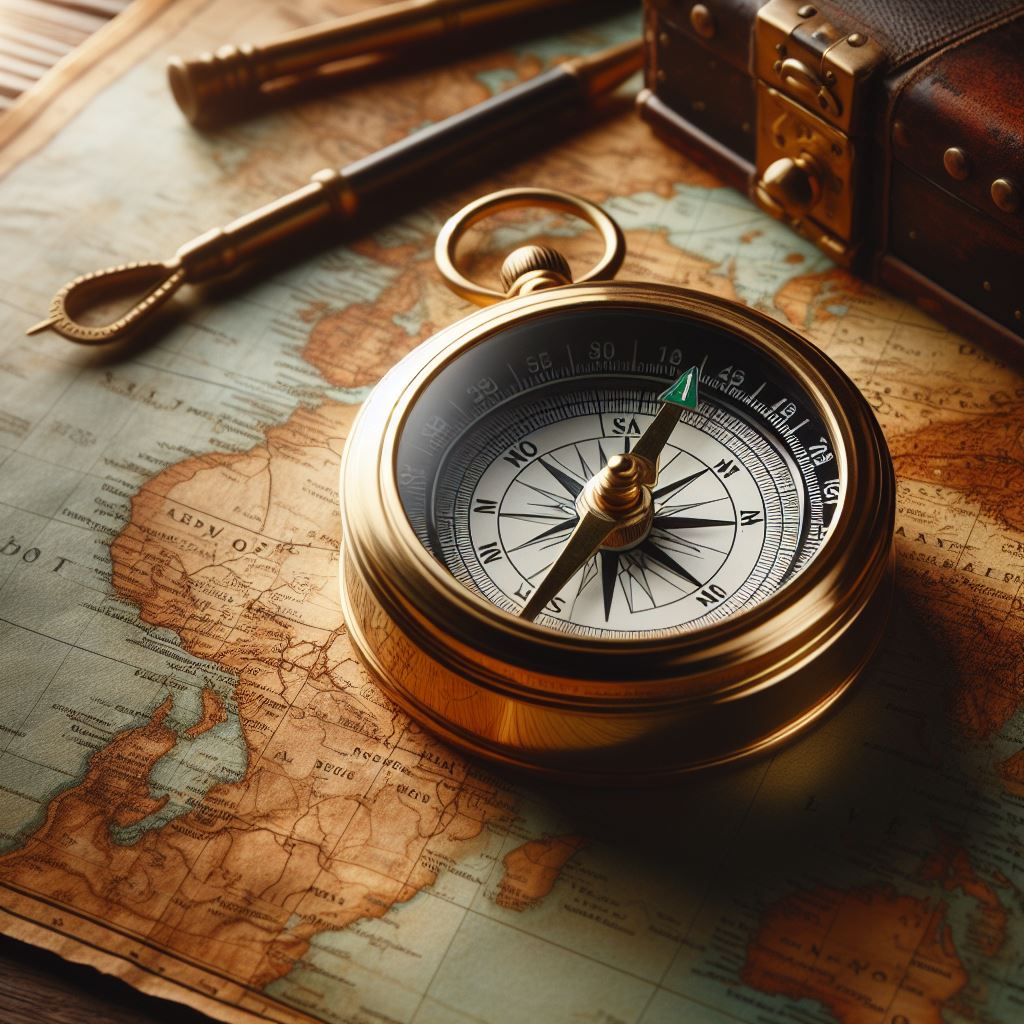
Impact of the compass on the navigation
Historical References and Evidence:
- Pivot and Cardan Suspension: The earliest mention of a pivoted compass needle appears in the “Elucidarium Astronomiae” by Petrus Peregrinus (1269), describing a needle resting on a pivot within a box. Later, suspension systems like gimbal rings (c. 1320s) further enhanced stability.
- Cardinal Directions and Wind Roses: Early mariner’s compasses featured markings for the four cardinal directions, often accompanied by wind roses showing additional directional points. Texts like the “Cantino Planisphere” (1502) showcase this layout.
- Sealed Box: Enclosing the compass in a sealed box protected the needle from wind and weather, improving its accuracy and reliability. References to such boxes appear in the writings of Guy de Lanfranchi (c. 1290).
16th century:
The 16th century witnessed the compass truly coming into its own. European empires, fueled by the Age of Exploration, relied heavily on this invaluable tool. Sailors like Vasco da Gama and Ferdinand Magellan had blazed the trail, and now navigators like Francis Drake, John Hawkins, and Pedro Álvares Cabral used the compass to chart new trade routes, establish colonies, and claim vast territories.
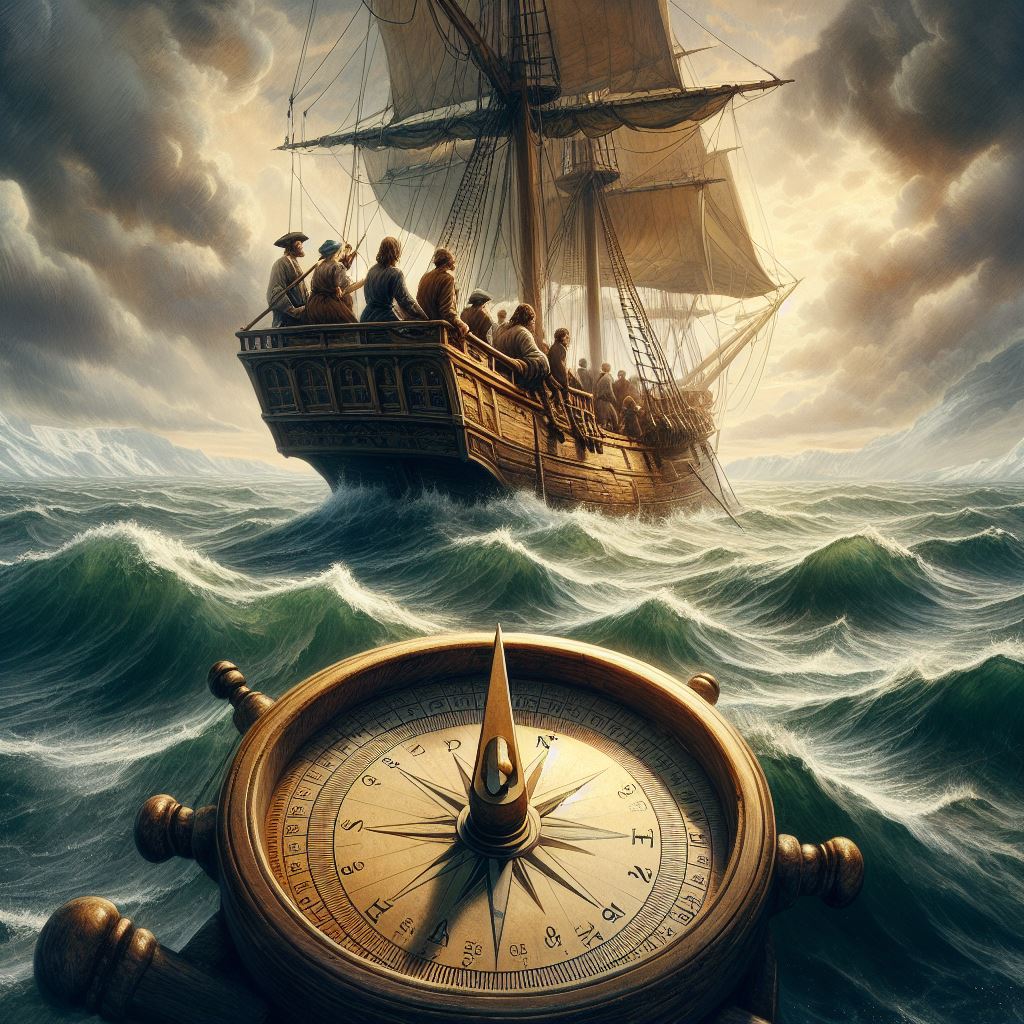
The compass’s impact extended far beyond mere exploration. It:
- Revolutionized warfare: Armies like the Ottomans and the Spanish employed the compass for tactical maneuvers and troop movements, giving them a significant advantage.
- Facilitated global trade: The accuracy and reliability of the compass allowed for safer and faster maritime voyages, boosting trade between continents and enriching empires.
- Advanced scientific understanding: Increased interest in magnetism and navigation led to groundbreaking discoveries like William Gilbert’s “De Magnete” (1600), laying the foundation for geomagnetism and electricity.
Historical Events Showcasing the Compass’s Influence:
- 1588 Spanish Armada: The English victory relied heavily on superior navigation tactics aided by the compass, allowing them to outmaneuver the Spanish fleet.
- Dutch East India Company (founded 1602): The compass played a crucial role in establishing Dutch trade dominance in Asia and beyond.
- Exploration of North America: Explorers like Jacques Cartier and Henry Hudson used the compass to navigate the continent’s coasts and waterways, opening up new territories for colonization.
20th century:
While the 20th century saw the rise of advanced navigational technologies like GPS, the compass remained a vital tool for various fields:
- Hiking and camping: Its simplicity and reliability made it a crucial tool for outdoor enthusiasts navigating wilderness areas.
- Surveying and construction: The compass continued to be used for land surveying and establishing precise measurements in construction projects.
- Military applications: Even with modern technology, the compass remained a backup tool for military personnel due to its reliability and independence from external systems.
Evolution of Design:
The compass’s design continued to evolve throughout history. Liquid-filled compasses emerged in the early 20th century, offering improved stability, and later advancements like prismatic compasses further enhanced functionality. Today, even wristwatches and smartphones incorporate digital compass features, highlighting its enduring relevance.
The Chinese had invented a more advanced version of the compass by the 11th century, which employed a magnetized needle floating in a bowl of water. This needle would align itself with the Earth’s magnetic field, indicating the direction of North. This design was much more accurate than the earlier versions and quickly spread throughout China and beyond.
The Spread of the Compass
The compass was one of the most significant discoveries of its time, and it spread fast throughout the world. By the 12th century, the compass had found its way to Europe, where sailors and adventurers utilized it to navigate the wide seas. European explorers used the compass to map new paths, find new places, and develop trade routes that spanned the world.
The 14th and 15th centuries witnessed the compass truly coming into its own. The Age of Exploration unfolded, fuelled by this invaluable tool. Sailors like Vasco da Gama and Ferdinand Magellan charted uncharted waters, relying on the compass’s guidance to navigate open ocean routes with unprecedented precision. This era pulsates with historical events showcasing the compass’s impact:
- 1497-1498: Vasco da Gama’s voyage around Africa to India heavily relied on the compass, allowing him to navigate vast stretches of open ocean.
- 1492: Christopher Columbus, while not the first European to reach the Americas, benefited from the improved accuracy of the mariner’s compass, aiding his transatlantic crossing.
- 1519-1522: The epic circumnavigation of the globe, led by Ferdinand Magellan after his death, relied heavily on the compass to navigate uncharted waters and prove the Earth’s sphericity.
The impact of the compass on European exploration cannot be overstated. Without this device, the Age of Exploration may never have happened. The compass allowed sailors to navigate with much greater accuracy, reducing the risk of getting lost or running aground. It also allowed them to sail further from shore, opening up new trade routes and territories.
The Impact of the Compass on Society
The compass has a significant influence on civilization in both ancient and modern times. The compass was employed for divination, fortune-telling, and geomancy (the practice of putting structures and items in accordance with the natural environment) in ancient China. It was also used for military purposes, allowing commanders to navigate and maneuver their armies with greater precision.
The compass was essential in Europe during the Age of Exploration, allowing sailors to navigate the broad oceans and find new territories. The discovery of new lands and resources had a huge impact on the global economy, propelling trade and commerce forward. The compass also played a key role in military strategy, allowing armies to navigate through unfamiliar terrain with greater accuracy.
The compass has also had a significant impact on science and technology. The study of magnetism that resulted in the design and building of the compass also resulted in the discovery of electricity and the development of modern electrical technology. The compass was also utilized as a model for the development of other devices used for navigation and astronomical observation, such as the astrolabe and sextant.
These devices were critical for early space exploration, and their development was only possible due to the discoveries made through the study of magnetism.
The Importance of the Compass Today
Despite numerous technical developments since the invention of the compass, it remains a vital tool today.
Yes, GPS offers unparalleled accuracy and convenience. But let’s not discount the compass’s unwavering dependability. In remote areas devoid of signal, amidst EMP blasts or solar flares, the compass stands its ground, a silent guardian offering direction when all else fails. This inherent reliability makes it a crucial tool for:
- Emergency responders: Search and rescue teams, firefighters, and even first responders navigating disaster zones rely on compasses for critical operations.
- Military personnel: From land navigation to tactical maneuvers, the compass remains a vital backup for armed forces in situations where electronic dependence can be perilous.
- Outdoor enthusiasts: Hikers, backpackers, and even geocachers find solace in the compass’s simplicity and independence, ensuring they never get truly lost in the wilderness.
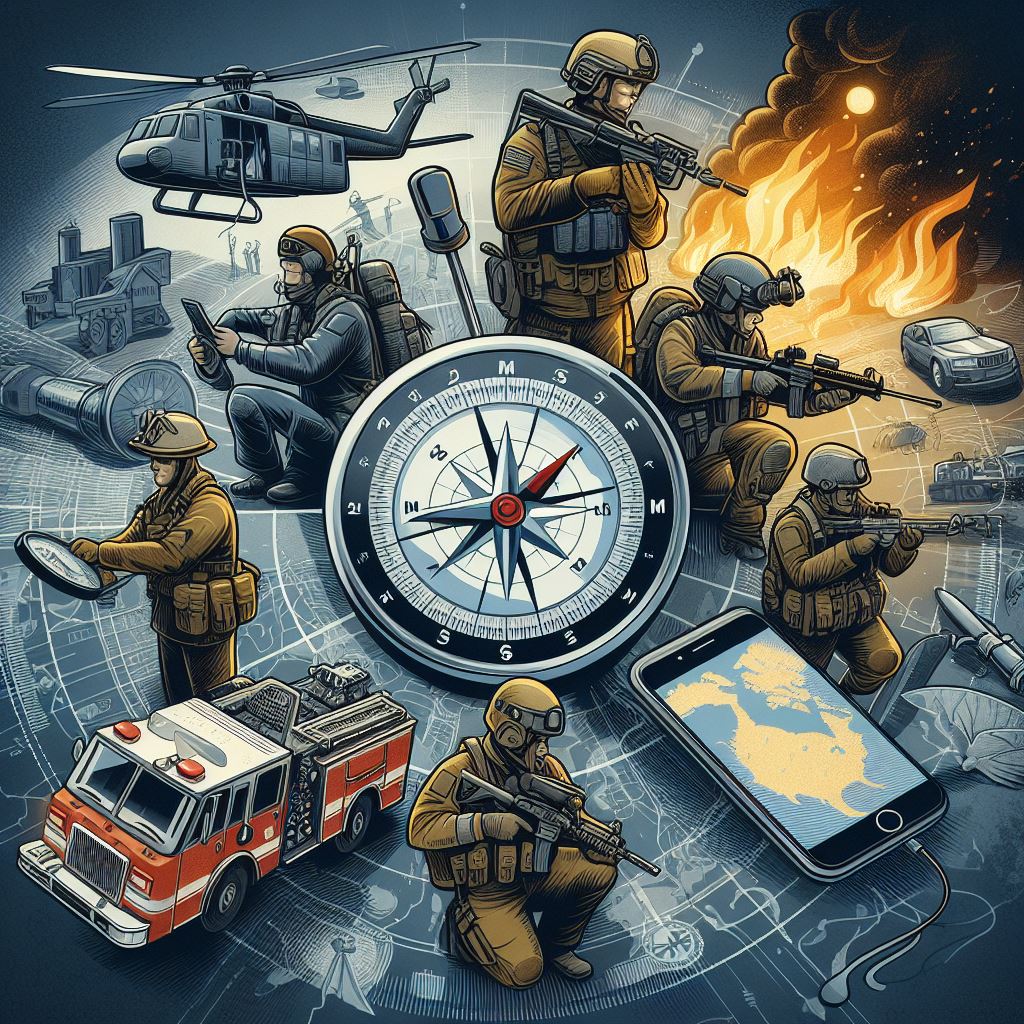
The compass transcends its practical applications, becoming a potent symbol of:
- Exploration and discovery: Its image evokes voyages into uncharted territories, both physical and metaphorical, reminding us of the human spirit’s yearning to push boundaries.
- Self-reliance and resilience: Navigating by the compass’s guidance embodies independence and resourcefulness, a reminder that the path forward often lies within our own determination.
- Connection to the Earth: Unlike satellite-guided devices, the compass connects us to the Earth’s magnetic field, a primal link reminding us of our place within the grander scheme of nature.
This symbolism finds expression in diverse realms:
- Logos and branding: Outdoor gear companies, travel agencies, and even educational institutions embrace the compass’s image, signifying their commitment to adventure and discovery.
- Literature and art: From Herman Melville’s “Moby Dick” to Jack Kerouac’s “On the Road,” the compass serves as a recurring motif, guiding characters and readers alike on journeys of self-discovery.
- Popular culture: Movies, video games, and even children’s stories often feature the compass as a tool for overcoming challenges and finding one’s way, solidifying its place in our collective imagination.
FAQ
Who invented the compass and when?
The first compasses appeared in ancient China during the Han dynasty, over two millennia ago (roughly between 202 BC and 220 AD).
What was the original purpose of the compass?
Before sailors relied on it for travel, the compass was mainly used for spiritual practices such as fortune-telling and geomancy.
How did the compass work in its earliest form?
Early compasses relied on lodestone, a naturally magnetized mineral. When placed on a surface or floated in water, it aligned itself with the Earth’s magnetic field—usually pointing south in Chinese tradition.
When did the compass start being used for navigation at sea?
Chinese mariners adopted the compass for sea voyages during the Song dynasty (960–1279 AD). By the 12th century, its use had spread along trade routes to Europe and the Middle East.
How did the compass evolve from its early designs?
Over time, compasses shifted from simple lodestones to magnetized iron needles. Later, innovations like the dry compass and the liquid-filled compass were introduced to improve accuracy and reduce needle wobble.
Why is the compass considered such an important invention?
The compass transformed travel by providing a dependable way to navigate without relying on landmarks, stars, or clear weather. It made long-distance exploration safer and opened the door to global trade and discovery.
What are dry and liquid compasses, and how are they different?
A dry compass suspends its needle in air, while a liquid compass uses fluid to stabilize the needle. The liquid design is especially useful on ships and aircraft where movement could cause the needle to swing too much.
Are there modern types of compasses beyond the magnetic compass?
Yes. Today we also use gyrocompasses, which detect true north using gyroscopes instead of magnetism, and digital compasses built into smartphones and GPS systems for everyday navigation.
Conclusion
In conclusion, the compass is undoubtedly one of the greatest innovations in human history. Its invention had a significant impact on society, science, and technology, and its impact can still be felt today. From ancient China to the current age, the compass has played an important role in human exploration and discovery, allowing us to chart new paths, find new countries, and test the limits of what is possible. The compass reminds us of our intrinsic drive to explore and learn, and its legacy will inspire future generations of adventurers and explorers.
Dive into more of my articles! Find my other blogs here:





